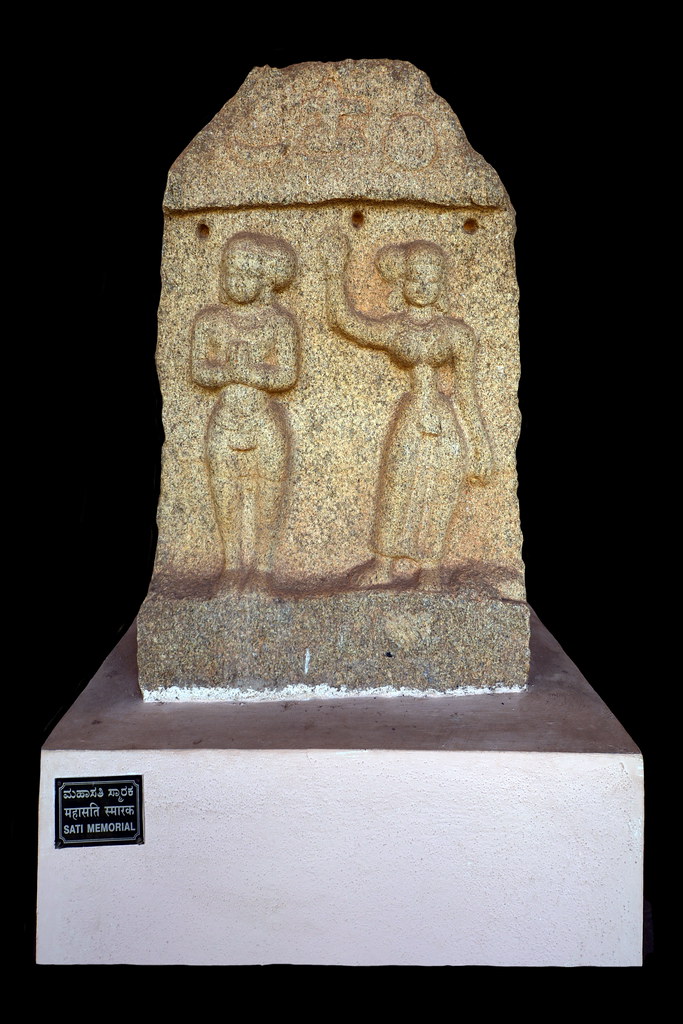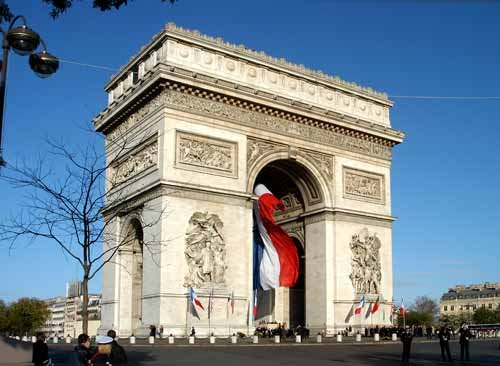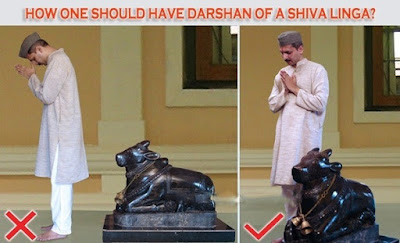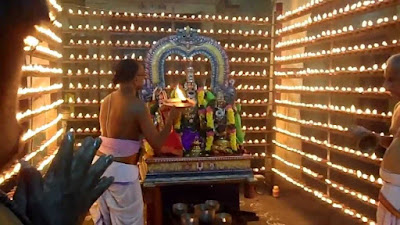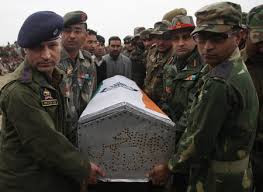ನಿಮಗೆ ಪ್ಯಾರೀಸ್ನಲ್ಲಿರುವ Arc De Triumphe ಗೊತ್ತೇ?..ಬಹುಷಃ ಗೊತ್ತಿರತ್ತೆ...ಅದು ಪ್ಯಾರಿಸ್ ನ ಅತ್ಯಂತ ಪ್ರಸಿದ್ದ ಪ್ರವಾಸಿ ಸ್ಥಳ...ಅದು ಯಾವುದಕ್ಕೆ ಕಟ್ಟಿದ್ದು ಗೊತ್ತೆ?....ಅದೂ ಬಹುಷಃ ಗೊತ್ತಿರತ್ತೆ....ಅದರಲ್ಲಿ ಮಹಾಯುದ್ದ೧ ರಲ್ಲಿ ಭಾಗವಹಿಸಿದ್ದ .."ಹೆಸರು ಗೊತ್ತರದ" ಸೈನಿಕನ ಶವ ಇದೆ. ಇದು ಆ ಮಹಾಯುದ್ದದಲ್ಲಿ ಮಡಿದ ಫ್ರಾನ್ಸಿನ ಸೈನಿಕರಿಗಾಗಿ ಕಟ್ಟಿದ ಸ್ಮಾರಕ (ಫ್ರಾನ್ಸ್ ದೇಶಕ್ಕೆ ಮಡಿದ ಸೈನಿಕರಿಗೋಸ್ಕರ).
(Do You Know "Arc De Triumph"?..Off course, you know...It is one of the famous monuments in Paris. Do you know, why was it built?... Probably yes. It is a monument with an unknown fallen soldier, to Honor all the soldiers martyred in WW-1 on behalf of France.)
ನಿಮಗೆ ಅದು ಪ್ರಪಂಚ ಮಹಾಯುದ್ದದೆಂದೂ, ಪ್ರಪಂಚವನ್ನು ಉಳಿಸಿದ ಸೈನಿಕರಿಗೆ ನೀವೂ ಗೌರವ ಸೂಚಿಸಬೇಕೆಂದೂ, ನಿಮಗೆ ಸಂಬಧಿಸಿದ್ದೂ, ಅವರಿಂದಲೇ ನೀವಿಂದು ಜೀವಿಸಿದ್ದೀರ ಅನ್ನಿಸುವ ಹಾಗೆ ವಿವರಣೆ ಕೊಟ್ಟು, ಅದಕ್ಕೆ ಸಂಬಂಧವೇ ಇರದ ಭಾರತೀಯರೂ, ಭಕ್ತಿ ಭಾವನೆಯಿಂದ ಗೌರವ ಕೊಡುವ ಹಾಗೆ, ಅಲ್ಲದೆ ಅದನ್ನು ನೋಡಿದ್ದು ಧನ್ಯ ಅನ್ನುವ ಭಾವನೆ ಬರುವ ಹಾಗೆ ಮಾಡಲಾಗುತ್ತದೆ. ದೇಶಕ್ಕೆ ಮಡಿದ ಯಾವುದೇ ಸೈನಿಕ ಗೌರವಾನ್ವಿತ. ಅದಕ್ಕಿಂತ ಹೆಚ್ಚಿನ ವಿಷಯ ಇಲ್ಲಿಲ್ಲ. (ಇದು ಬೇರೆ ವಿಷಯ).
ಹಾಗೆ ನಿಮಗೆ ದೆಹಲಿ ಯಲ್ಲಿರುವ ಇಂಡಿಯಾ ಗೇಟ್ ಗೊತ್ತೆ?..ಅದೂ ಗೊತ್ತಿರುತ್ತದೆ. ಇದನ್ನ ಬ್ರಿಟಿಷರು ತಮ್ಮ ಜನ ಹಾಗೂ ಆ ಯುದ್ದಕ್ಕೆ ಸಂಬಂಧವೇ ಇರದ, ಆದರೆ ಹೊರಾಡಿ ಮಡಿದ ಭಾರತೀಯ ಯೋಧರ ನೆನಪಪಿಗೆ (ಮಹಾಯುದ್ದ -೧) ಕಟ್ಟಿದ್ದು.
(Do you know, "India Gate" in Delhi? It is obvious...It is built by British to honor British citizens, who were residents of India, but fought in WW-1 on behalf of queen (main objective). It "also" remembers Indian soldiers who fought along Britishers for the queen.
ಇದನ್ನೇ ಭಾರತೀಯ ಸೈನ್ಯದಲ್ಲಿ ಮಡಿದ ಸೈನಿಕರ ನೆನಪಿಗೆ ಅಂತ ನೆವ ಹೇಳಿ, ಮುಂದುವರೆಸಿ, ಗಣತಂತ್ರ ದಿವಸದಂದು ರಾಷ್ಟ್ರಪತಿ, ಪ್ರಧಾನ ಮಂತ್ರಿ ಹಾಗೂ ಸೈನ್ಯದ ಮುಖ್ಯಸ್ಥರು ಬಂದು ಮಡಿದ ಸೈನಿಕರಿಗೆ ಗೌರವ ಸೂಚಿಸಿ ಹೋಗುತ್ತಾರೆ. ಆದರೆ ಈ ಸ್ಮಾರಕ ಕಟ್ಟಿದ್ದು ಬ್ರಿಟಿಷ್ ಸಾಮ್ರಾಜ್ಯಕ್ಕೆ ಮಡಿದ ಸೈನಿಕರಿಗೆ ನಮಿಸುವುದಕ್ಕೋಸ್ಕರ.
(Indian Govt, has used this WW-1 memorial with an extend the scope to use it as the main military memorial of the country. President (commander in chief), Prime minister, Defense minister and chief of staff of 3 wings of Indian military visit the memorial on Republic day and pay their homage)
ಭಾರತೀಯರ ವಿರುದ್ಧ ದೌರ್ಜನ್ಯ ಮಾಡಿದ ಬ್ರಿಟಿಷ್ ಸೈನಿಕರಿಗೆ, ಈ ರೀತಿ
ಭಾರತೀಯರೆಲ್ಲರ ಪರವಾಗಿ, ದೇಶದ ನಾಯಕರೆಲ್ಲರೂ, ಗೌರವ ಸೂಚಿಸುವುದು ಗುಲಾಮಗಿರಿಯೆಲ್ಲವೇ?
ಭಾರತೀಯರೆಲ್ಲರಿಗೂ ಅವಮಾನ ಮಾಡಿದಂತಲ್ಲವೇ? ಸೋವಿಯತ್ ನಾಶವಾದ ಮೇಲೆ, ಅಲ್ಲಿನ ಲೆನಿನ್
ಪ್ರತಿಮೆಗಳನ್ನ ಉರುಳಿಸಲಾಯಿತು, ಅದೇ ಗತಿ ಸದ್ದಾಂ ಪ್ರತಿಮೆಗಾಯಿತು. ೭ ದಶಕ ಕಳೆದರೂ ಈ
ಬ್ರಿಟಿಷ್ ಸೈಯಾಧಿಕಾರಿಗಳೂ, ಸೈನ್ಯದ ಸ್ಮಾರಕ ಇನ್ನೂ ನಮಗೆ ಯಾಕೆ?
(How unfortunate are we? Even after 7 decades, In this big country we do not have land or resources to build a dedicated memorial for our soldiers, who have fought 4wars after independence. As India gate has names of officers served and stood for the ideology that enslaved Indians, it is a great insult to Indians and Indian state to continue to give homage to this memorial).
ಇಷ್ಟು ದೊಡ್ಡ ಭಾರತದಲ್ಲಿ ಮಡಿದ ಸೈನಿಕರಿಗೆ ಕೊಡಲು ಜಾಗ, ನಮ್ಮ ಸರಕಾರದ ಬಳಿ ಇಲ್ಲ. ಬೆಲೆ ಕಟ್ಟಲಾಗದ ತ್ಯಾಗ ಮಾಡಿದ ಸೈನಿಕರಿಗೆ ಸ್ವಲ್ಪ ಖರ್ಚು ಮಾಡಿ ಸ್ಮಾರಕ ಕಟ್ಟಲು ಸರಕಾರಕ್ಕೆ ದುಡ್ಡಿಲ್ಲ. ಆದರೆ ಎಕರೆ ಗಟ್ಟಲೆ ಬಳಸಿ, (ಕೆಲ ವರ್ಷ ಆಳಿದ) ಸತ್ತ ಪ್ರಧಾನ ಮಂತ್ರಿಗಳ ಹೆಸರಿನಲ್ಲಿ, ಸ್ಮಾರಕಗಳನ್ನು, ದೆಹಲಿ ತುಂಬಾ ಕಟ್ಟಲಾಗಿದೆ.
ಯಾಕೆ ಹೀಗೆ? ಸೈನಿಕರಿಗೆ ಗೌರವ ಕೊಡಲಾಗದ ಸಂಸ್ಕೃತಿ ಭಾರತೀಯರದ್ದೇ? ಬ್ರಿಟಿಷರು ಬರುವ ಮೊದಲೇ ಬಹಳಷ್ಟು ಯುದ್ಧಗಳು ಭಾರತ ಭೂಮಿಯಲ್ಲಿ ನಡೆದಿದೆ. ಅಲ್ಲಿ ಮಡಿದ ಸೈನಿಕರಿಗೆ ಅಂದಿನ ಜನಾಂಗ ಸ್ಮಾರಕ ಕಟ್ಟಿಲ್ಲವೇ? ಕಟ್ಟಿದ್ದರೆ ಅವೆಲ್ಲ ಎಲ್ಲಿ? ಈ ರೀತಿ ಪ್ರಶ್ನೆ ನಿಮಗೆ ಕನಸಿನಲ್ಲೂ ಬರದಿರುವಂತೆ, ಶಿಕ್ಷಣದ ಮೂಲಕ, ನಿಮ್ಮ ಮನಸ್ಸು ತಿದ್ದಲಾಗಿದೆ.
(Why is this situation in India? Are we a society with cultural bankruptcy to respect and remember our fallen soldiers? India is an old civilization with rich cultural heritage. There were many wars before Europeans arrived. How did the society treated their fallen soldiers then? Were there any war memorial? If it was build where are they now? Our education is tweaked such that, we never ask these questions).


ನಿಮಗಿದು ಗೊತ್ತಿರಲಿ,
ಬ್ರಾಹ್ಮಣರು, ಸಂಧ್ಯಾವಂದನೆ ಮಾಡಲಿ ಅಥವಾ ಬಿಡಲಿ,
ಸೂರ್ಯದೇವ, "ದೇವರಿಗೆ ಹಾಗೂ ಸತ್ತ ಸೈನಿಕರಿಗೆ, ದಿನಾ ಸಂಜೆ ಗೌರವ ಕೊಟ್ಟು, ಅಸ್ತಂಗತ ನಾಗುವಂತೆ ಹಿಂದೂ ದೇವಾಲಯಗಳನ್ನು ನಿರ್ಮಿಸಲಾಗಿದೆ!
In India "Suryadeva" ritually "Bow" his head to the fallen soldiers daily
ಹೌದು, ಆ ಯುದ್ಧ ಸ್ಮಾರಕಗಳೆಲ್ಲಿ? ಈಗ ತಿಳಿಯೋಣ.
(But seriously, where are those memorials?, Please read on...you will find out).
ನೀವು ಬಹುಷಃ ಬಹಳಷ್ಟು ದೇವಸ್ಥಾನಗಳನ್ನು ನೋಡಿರಬಹುದು. ಅಲ್ಲಿ ಈಶ್ವರನ ಮುಂದೆ ಕುಳಿತ "ನಂದಿ" ನೋಡಿರುತ್ತೀರಿ.
(
You probably would have seen many Hindu temples. Then, You've definitely seen "Nandi" sitting there before Ishwar.)
ಹಾಗೆ ನಂದಿ ಹಿಂದೆ ಧ್ವಜ ಕಂಬ ಇರುತ್ತದೆ ಅಥವಾ ಬಲಿ ಪೀಠ ಇರುತ್ತದೆ. ಅದನ್ನೂ ನೋಡಿರುತ್ತೀರಿ.
( Similarly, you might have observed a flag pole and (some times) a "Bali Peetam" too behind Nandi).
ಇನ್ನು ವಿಷ್ಣು ದೇವಸ್ಥಾನಕ್ಕೆ ಹೋದರೆ ಅಲ್ಲಿ "ಗರುಡ"ಕಂಭ ಇರುತ್ತದೆ.
(If you visit a Vishnu Temple, similarly you observe "Garuda Pole" or Garuda Gambha).
ಅದು ಯಾಕೆ ಇರುತ್ತದೆ ಎಂದು ಯಾವಾಗಲಾದರೂ ಯೋಚಿಸಿದ್ದೀರಾ? ಯಾರಾನ್ನಾದರೋ ಕೇಳಿದ್ದೀರಾ? ಅಥವಾ ಯಾರಾದರೋ ಅದರ ಬಗ್ಗೆ ನಿಮಗೆ ಹೆಳಿದ್ದಾರಾ? ಇರಲಾರದು. ಅದು ಯಾಕೆ ಇದೆ ಅಂತ, ನಿಮ್ಮ ತಂದೆ, ತಾತಾ ಅಥವಾ ಮುತ್ತಾತನಿಗೂ ತಿಳಿದಿರಲಾರದು. ಕೇಳಿದರೂ ಅದಕ್ಕೆ ಒಂದು ಸಿದ್ದ ಉತ್ತರ ಇರುತ್ತದೆ. ಅದು,
ನಂದಿ, ಈಶ್ವರನ ವಾಹನ, ಗರುಡ ವಿಷ್ಣುವಿನ ವಾಹನ. ನಮ್ಮ ಮನೆ ಮುಂದೆ ಕಾರು ನಿಲ್ಲಿಸಿದ ಹಾಗೆ, ದೇವರಿಗೆ ರೆಡಿಯಾಗಿ ಬೇಕಾದಾಗ ಹೋರಾಡಲು ಅವರ ವಾಹನ ನಿಲ್ಲಿಸಿದ್ದಾರೆ ಅಷ್ಟೇ.
(
Have you ever wondered why are they constructed in Temple? Have you ever asked anybody or does anyone told you about it? Most probably not. Neither your father, grand father or great grad father would be aware of it. If you persist, then there is a ready answer to it
Ishwar's vehicle is "Nandi". Similarly, Vishnu has "Garuda". It is Just like the way, we park our car in our canopy. So, why question the obvious? And there ends the matter).
(But do you know, why are they positioned exactly in front of the vehicle? We park our cars in garages. Similarly these, godly vehicles can be parked in a side garage. Why position them at a point, that gives the best view of the idol? If you question like this, you would be told that, it is just a tradition or it has to be like that as per the temple construction code [which you would not understand any way] or they will tell you a story from "Puranas" and push you out).
ಸರಿ ಆದರೆ ಈ ವಾಹನಗಳು ದೇವರ ಮುಂದೆಯೇ ಯಾಕೆ ಇರುತ್ತದೆ? ನಾವು ಕಾರನ್ನು ಮನೆಯ ಪಕ್ಕದ ಗ್ಯಾರೇಜ್ನಲ್ಲಿ ನಿಲಿಸುತ್ತೇವೆ. ಹಾಗೆ ವಾಹನವನ್ನು ಪಕ್ಕದಲ್ಲಿ ಸಣ್ಣ ಗುಡಿ ಮಾಡಿ ಇಡಬಹುದಲ್ಲವೇ? ಈ ರೀತಿ ಕೇಳಿದರೆ, ಬಹುಷಃ ಪ್ರಶ್ನೆ ಕೇಳಿದವನು ತಲೆಹರಟೆ ಎಂದು ನಿರ್ಧರಿಸಿ, ಅದು ಶಿಲ್ಪಶಾಸ್ತ್ರಕ್ಕೆ ಸಂಬಂಧ ಪಟ್ಟಿದ್ದು ಅಂತಲೋ, ಇಲ್ಲ ಅದಕ್ಕೆ ಯಾವುದೊ ಒಂದು ಪುರಾಣದ ಕತೆಯನ್ನೋ ಉದಾಹರಿಸಿ ಪ್ರಶ್ನೆ ಕೇಳಿದವರನ್ನು ಸಾಗಹಾಕುತ್ತಾರೆ (
Lord Shiva is also known as Viṣhakantha (the poison-throated
one). The poison in the throat is always a burning sensation for lord
Shiva. Lord Shiva loves to spend time in meditation (Dhyanam). But this
burning throat is not allowing him to do his meditation. Then he ordered
Nandi to sit in front of him and blow some air on to his throat. The
air blown on to his throat relieves him from the burning sensation. From
then onwards, Lord Shiva does his mediation with the help of Nandi.).
ಅಸಲಿಗೆ, ಪ್ರಶ್ನೆಗೆ ಸರಿಯಾದ ಉತ್ತರ ಅವರಿಗೆ ಗೊತ್ತಿಲ್ಲ ಅಷ್ಟೇ.
(Fact of the matter is, they do not know the answer. We have a strange cultural aspect that stops us from acknowledging, what we do not know. It hurts our ego, as it is socially considered as insulting to openly accept, we do not know the answer, especially when some one approaches us with an expectation that, we are knowledgeable than the questioner. India suffer to say "No" and this aspect is mocked by westerners).
ಹಾಗಾದರೆ ನಿಜ ಏನು? ಗರುಡ, ನಂದಿ ದೇವರ ಅಂಗರಕ್ಷಕ ಕೂಡ ಹೌದು ಅನ್ನುವುದನ್ನು ನಾವು ತಿಳಿಯುವುದರಿಂದ ಇದರ ಕತೆ ಆರಂಭ ಆಗುತ್ತದೆ. ಗರುಡ, ಗರುಡ ಗಂಬ, ನಂದಿ, ನಂದಿ ಧ್ವಜ, ದೇವರ ವಾಹನ ಅಥವಾ ದೇವರ ಬಾಗಿಲ ಬಳಿ ಕೆತ್ತಿರುವ ದ್ವಾರಪಾಲಕರು ಕೂಡ, ನಮ್ಮ ದೇಶದ ಸೈನ್ಯದ ಸ್ಮಾರಕಗಳಾಗಿವೆ. ಬೌದ್ದರು ಮತ್ತು ಜೈನರು ಇದನ್ನು ಯಕ್ಷ/ಯಕ್ಷಿಣಿ ಎಂತಲೂ ಅವರ ದೇವಸ್ಥಾನದಲ್ಲಿ ಕೆತ್ತಿರುತ್ತಾರೆ.
(So, what is the Truth? It starts by understanding the fact that, Garuda, Nandi are personal guards (with high degree of loyalty) of the respective gods. Garuda, Garuda gambha, Nandi, Nandi flag post, Guards [dwarapalakas] on wither sides of the temple door or any vehicle [ex: Tiger for Chamundi, Mouse for Ganesh] represent the "Soldier or the Military strength". They represent the " 100% Loyalty and self less service to the state". These also represent "Military monuments" in our country. In Buddhist and Jain temples, you may see "Yakshas and Yakshis" and they too represent soldiers.

ಭಾರತದಲ್ಲಿ ವೈದಿಕ ಸಂಸ್ಕೃತಿ ಇದ್ದಾಗ ದೇವಸ್ಥಾನಗಳು ಇರಲಿಲ್ಲ. ನಂತರ ದೇವಸ್ಥಾನಗಳು ಸಮಾಜದಲ್ಲಿ ಪ್ರಮುಖ ಪಾತ್ರ (ಸಾಮಾಜಿಕ ನ್ಯಾಯ, ಭದ್ರತೆ, ಶಿಕ್ಷಣ, ಮನರಂಜನೆ, ಕಲೆ, ವಿಜ್ಞಾನ ಬೆಳಸುವ ಕೇಂದ್ರ) ವಹಿಸಲು ಶುರುಮಾಡಿ, ಸಮಾಜದ ಕೇಂದ್ರ ಮತ್ತು ಆಧಾರ ಸ್ತಂಭ ಅದವು. ಈ ವ್ಯವಸ್ಥೆಯನ್ನು ಎಲ್ಲ ಊರಿನಲ್ಲಿ ಪ್ರಸರಿಸಲು, ದೇವಸ್ಥಾನ ಕಟ್ಟುವ ಕಾರ್ಯ ಶುರು ಆಯಿತು. ದೇವಸ್ಥಾನ ಕಟ್ಟುವ ಕೆಲಸ ಬಹಳ ಖರ್ಚಿನ ಕೆಲಸ. ಆದ್ದರಿಂದ ಯುದ್ಧ ನಡೆದಾಗ ಅದರಲ್ಲಿ ಬರುವ ಕಪ್ಪ ಕಾಣಿಕೆ ಬಳಸಿ ದೇವಸ್ಥಾನ ಕಟ್ಟುವ ಸಂಪ್ರದಾಯ ಶುರುವಾಯಿತು. ಯುದ್ಧದಲ್ಲಿ ಭಾಗವಹಿಸಿದ ಯೋಧರ ಮನೆಯವರು ತಮ್ಮ ಮನೆಯವರ ಬಲಿದಾನ ವ್ಯರ್ಥವಾಗದೆ ದೇಶದ ಬೆಳವಣಿಗೆಗೆ ಅದು ಬಳಕೆಯಾಗುವುದು ದೇವಸ್ಥಾನದ ಕೆಲಸ ಕಾರ್ಯಗಳಲ್ಲಿ ಕಾಣುತಿತ್ತು. ಇದು ಅವರ ದುಃಖ ಭರಿಸಲು ಸಹಾಯ ಆಗುತಿತ್ತು. ರಾಜಗೋಪುರ ಯುದ್ಧ ಗೆದ್ದ ರಾಜನ ಹೆಸರನ್ನು ಅಜರಾಮರಗೊಳಿಸಲು (ಹಾಗೆ ಅವರಿಗೆ ಗೌರವ ಸೂಚಿಸಲು) ಕಟ್ಟಲಾಗುತ್ತಿತ್ತು.
ಹಾಗೆ, ದೇಶಕ್ಕಾಗಿ ಮಡಿದ ಸೈನಿಕರನ್ನು ನೆನೆಯಲು ಏನಾದರೋ ಕಾರ್ಯಕ್ರಮ ಮಾಡಲು ಯೋಚಿಸಿ ಕಾರ್ಯರೂಪಕ್ಕೆ ತಂದ ಫಲವೇ ಗರುಡ ಗಂಬ ಅಥವಾ ನಂದಿ ಕಂಬ.
ತಮಿಳುನಾಡಿನಲ್ಲಿರುವ ಬೃಹದೀಶ್ವರ ದೇವಸ್ಥಾನದಲ್ಲಿ ಭೂಮಿಯನ್ನ ಎತ್ತಿಹಿಡಿದ ಸೈನಿಕರೂ, ಆನೆಗಳೂ ಇರುವುದನ್ನು ಗಮನಿಸಿ.
ರಾಜ್ಯ ದೇವರ ಹೆಸರಿನಲ್ಲಿ ಇದೆಯೆಂದು (ದೇವರದ್ದೆಂದು), ರಾಜ ದೇವರ ಪ್ರಧಾನ ಸೇವಕನಾಗಿ ದೇವರ ಹೆಸರಿನಲ್ಲಿ ರಾಜ್ಯಭಾರ ಮಾಡುವವನೆಂದು ನಂಬಿದ್ದ ಸಂಸ್ಕೃತಿ ನಮ್ಮದು . ಆದ್ದರಿಂದ ದೇವಸ್ಥಾನ ಅಥವಾ ಸಮಾಜ ಅಥವಾ ರಾಜ್ಯ ಎಲ್ಲ ಒಂದೇ ಎಂದು ಜನ ಭಾವಿಸಿದ್ದರು. ಈ ರಾಜ್ಯ ಕಾಯಲಿಕ್ಕ ಪ್ರಭಲ ಸೈನ್ಯ ಇದೆ ಎಂದು ತೋರಿಸಲು ಸೈನಿಕರು, ಅವರ ಕುದುರೆ, ಆನೆ, ಒಂಟೆ, ಯುದ್ಧದ ಪ್ರಸಂಗ ದೇವಸ್ಥಾನದಲ್ಲಿ ಮೇಳೈಸಿದ್ದವು. ಇದನ್ನು ನಮ್ಮ ಹೊಯ್ಸಳರ ದೇವಸ್ಥಾನಗಳಲ್ಲಿ ಹೆಚ್ಚು ಪ್ರಮುಖವಾಗಿ ನೋಡಬಹುದು.
ಭಾರತದ ಉತ್ಕೃಷ್ಟ ಸಂಪ್ರದಾಯ ಪಡೆದ ಬಾಲಿಯಲ್ಲಿ ಅದೇ ರೀತಿ ಸೈನಿಕರ ಪಡೆಯೇ ದೇವಸ್ಥಾನವನ್ನ ಎತ್ತಿ ಹಿಡಿದುರುವುದನ್ನು ಗಮನಿಸಿ.
ತಮಿಳುನಾಡಿನಲ್ಲಿರುವ ತಿನ್ದಿವನಂನಲ್ಲಿರುವ ( http://tamilnadu-favtourism.blogspot.in/2015/12/mahaveer-jain-temple-peravur-villupuram.html) ಜೈನ ದೇವಸ್ಥಾನದ ಕಂಭ, ಧರ್ಮ ಚಕ್ರ ಹಾಗೂ ಬಲಿಪೀಠ ಗಮನಿಸಿ. ಶುದ್ಧ ಸಸ್ಯಾಹಾರದ, ಪ್ರಾಣಿವಧೆ ವಿರೋಧಿಸುವ (ಯಾವುದೇ ಪ್ರಾಣಿ ಅಪ್ಪಿ ತಪ್ಪಿಯೂ ಬಾಯಲ್ಲಿ ಹೋಗಿ ಸಾಯಬಾರದೆಂದು ಬಾಯಿಗೆ ಬಟ್ಟೆ ಕಟ್ಟುವ) ಜೈನ ದೇವಸ್ಥಾನದಲ್ಲಿ ಬಲಿ ಪೀಠ ಯಾಕೆ?
ನಂದಿ ಹಿಂದೆ ಧ್ವಜ ಕಂಬ ಇರುತ್ತದೆ ಅಥವಾ ಬಲಿ ಪೀಠ ಇರುತ್ತದೆ.ಈ ಬಲಿ ಪೀಠ ಕುರಿ ಕೋಳಿ
ಬಲಿ ಕೊಡಲು ಅಲ್ಲ. ಅದು 'ಬಲಿಯಾದ" ಸೈನಿಕರನ್ನ ನೆನಪಿಸಲು ಹಾಗೂ "ಬಲಿದಾನವನ್ನು"
ಗೌರವಿಸಲು. ಕೆಲವೊಂದು ಬಲಿ ಪೀಠದಲ್ಲಿ ಸ್ವಾಮಿ ಪಾದ ಕೆತ್ತಿರುವುದನ್ನ ನೋಡಬಹುದು. ಇದರ ಅರ್ಥ, ಬಲಿಯಾದ ಸೈನಿಕ, ಸ್ವಾಮಿಪಾದ ಸೇರಿದ್ದಾನೆ, ಗೌರವಿಸಿ, ಎನ್ನುವುದಾಗಿದೆ.

Bali peeta at Doddagadduvalli Lakshmi Temple,Hasan District, Karnataka, A Hoysala era Temple. This clearly shows, offer of head via sacrifice for the country/Prime Diety/King). It symbolizes self sacrifice of a soldier. Balipeeta is not a platform to kill animals.
ಇದು ಭಾರತದಲ್ಲಿ ಬಹಳ ಹಿಂದಿನಿಂದಲೂ ಪ್ರಚಲಿತದಲ್ಲಿತ್ತು ಅನ್ನುವುದಕ್ಕೆ, ಗ್ರೀಕ್ ವ್ಯಕ್ತಿ, ತನ್ನ ಪರವಾಗಿ ಹೋರಾಡಿದ ಭಾರತದ ಯೋಧರ ನೆನಪಿಗೆ (ರಾಜನ ಸ್ನೇಹಕ್ಕೆ, ಮಿತ್ರ ರಾಜನ ಸೈನ್ಯದ ಕೂಡ ಹೋರಾಡುವುದು ಸಾಧಾರಣ ಪ್ರಕ್ರಿಯೆಯಾಗಿತ್ತು. ನಂಬಿದವರ ತಲೆ ರಕ್ಷಣೆ ಮಾಡುವುದು ಸೈನಿಕ ಧರ್ಮ ಆಗಿತ್ತು.) ಗರುಡ ಕಂಬ ಸ್ಥಾಪಿಸಿದ್ದು, ಅದು ಈಗ ಪುರಾತತ್ವ ಇಲಾಖೆಯಲ್ಲಿದೆ. ಸರಿಯಾದ ಇತಿಹಾಸ ತಿಳಿಯದ ಇಲಾಖೆಯವರು, ಬೇರೆಯದನ್ನೇ ಬರೆದಿದ್ದರೆ.
ರಾಜನ ಅಂಗರಕ್ಷಕರನ್ನು ಗರುಡರೆಂದೂ, ಲೆಂಕರೆಂದೂ ಕರೆಯುತ್ತಿದ್ದರು.ಅತ್ಯಂತ ನಂಬಿಕಸ್ತ, ರಾಜ ಭಕ್ತಿ/ದೇಶ ಭಕ್ತಿ ಹೆಚ್ಚಿರುವ, ನಿಷ್ಠೆಯ ಪರಾಕಾಷ್ಠೆ, ಹೊಂದಿರುವ ಜನರನ್ನು ರಾಜನ ಅಂಗರಕ್ಷಕ ಪಡೆಗೆ ಸೇರಿಸಿಕೊಳ್ಳಲಾಗುತ್ತಿತ್ತು.

ಯುದ್ದಕ್ಕೆ ಮುಂಚೆ, ಆತ್ಮಾಹುತಿ ಮಹತ್ವವನ್ನ ತಿಳಿಸಲಿಕ್ಕಾಗಿ ಹಾಗೂ ರಾಜನಿಗೆ ಸೈನ್ಯದ ನಿಷ್ಟೆಯನ್ನ ೧೦೦% ಖಚಿತಪಡಿಸಲು ಒಬ್ಬ "ಗರುಡ" ಸಿಡಿತಲೆ ಮಾಡುತ್ತಿದ್ದ. ಸಿಡಿತಲೆ ಅಂದರೆ, ಒಂದು ಬಾಗಿದ ಬಿದಿರಿಗೆ ತನ್ನ ತಲೆಯನ್ನು ಕಟ್ಟುವುದು ಹಾಗೂ ತನ್ನ ತಲೆಯನ್ನು ತಾನೇ ಖಡ್ಗದಿಂದ ಬೇರ್ಪಡಿಸಿಕೊಳ್ಳುವುದು. ಬೇರೆಯಾಗುವ ತಲೆ, ರಕ್ತವನ್ನು ಸುತ್ತುವರಿದ ಸೈನ್ಯದಮೇಲೆಲ್ಲಾ ಚೆಲ್ಲುತ್ತಿತ್ತು. ಈ ದೃಷ್ಯದಿಂದ ಯುದ್ದದಿಂದ ಹಿಂದೆ ಸರಿಯುವ ಹೆದರಿಕೆ ಮಿಕ್ಕೆಲ್ಲಾ ಸೈನಿಕರಿಗೆ ದೂರ ಆಗುತ್ತಿತ್ತು. ಯುದ್ದದ ಬಗ್ಗೆ ಸೈನಿಕರ ಮನೆಯವರಾಗಲೀ ಅಥವಾ ಇನ್ನು ಯಾರೇ ಆಗಲಿ (ಈಗಿನ ಮೀಡಿಯಾದಂತೆ, ಬುದ್ದಿಜೀವಿಗಳಂತೆ ಅನವಶ್ಯಕ ಪ್ರಶ್ನೆ ಎತ್ತುವ ಮಂದಿಯ ಬಾಯಿ ಮುಚ್ಚುತ್ತಿತ್ತು) ಬಂದು ಯುದ್ದ ತಪ್ಪಿಸುವುದು ನಿಲ್ಲುತ್ತಿತ್ತು. ಮಾಡಿ ಇಲ್ಲವೇ ಮಡಿ ಇವೆರಡು ಆಯ್ಕೆ ಮಾತ್ರ ಸೈನಿಕರಿಗೆ ಉಳಿಯುತ್ತಿತ್ತು. ಇದು ಸೈನಿಕರು ತಮ್ಮೆಲ್ಲಾ ಪರಾಕ್ರಮ ಬಳಸಿ ಯುದ್ದಗೆಲ್ಲಲು ಹಾಗೂ ಶತ್ರು ಸಂಹಾರ ಮಾಡಲು ನೆರವಾಗತ್ತಿತ್ತು. ಗರುಡರು ಅತ್ಯಂತ ಹೆಚ್ಚಿನ ಆದರ ಮರ್ಯಾದೆ ಪಡೆಯುತ್ತಿದ್ದರು. ಈ ರೀತಿಯ ಬಲಿದಾನ, ಜನರಲ್ಲಿ ಅತ್ಯಂತ ಉತ್ಕೃಷ್ಟವಾದ ರಾಜಭಕ್ತಿ, ದೇಶಪ್ರೇಮ, ಹಾಗೂ ಭ್ರಷ್ಟಾಚಾರ, ಮೋಸ ಇಲ್ಲದ ಶುದ್ದ ಸಮಾಜ ನಿರ್ಮಾಣ ಉಂಟಾಗಲು ಕಾರಣ ಆಗಿತ್ತು.



ಈ ರೀತಿ ದೇಶಕ್ಕಾಗಿ ಪ್ರಾಣ ತ್ಯಾಗ ಮಾಡಿದ ಸೈನಿಕರಿಗಾಗಿ, ಪ್ರತಿ ಊರಲ್ಲೊ ಜಾಗ ಕೊಟ್ಟ ಸಂಸ್ಕೃತಿ ನಮ್ಮದು. ಈ ಜನ ಹಾಗೂ ಅವರ ವಂಶಸ್ಥರು ಯಾವಾಗಲೂ ದೈವ ಕೃಪೆ ಪಡೆಯಲಿ ಎಂದು, ಗರುಡ ಕಂಬ ಅಥವಾ ನಂದಿ ಕಂಬ ದೇವರ ಮುಂದೆ ನೆಟ್ಟಿರುತ್ತಾರೆ.
ಹಾಗೆ ಈ ಜನ ಸತ್ತ ನಂತರ ದೈವ ಸಾನಿಧ್ಯ ಪಡೆದಿದ್ದಾರೆ ಎಂದು ಇಲ್ಲರೂ ತಿಳಿಯಲಿ, ಅವರು ಬೇರೆಲ್ಲ ಜನಕ್ಕಿಂತ ಬಹಳ ಎತ್ತರಕ್ಕೆ ಏರಿದ ಮಂದಿ ಎಂದು ತಿಳಿಸಲು ಕಂಬದ ಮೇಲೆ ಉನ್ನತ ಸ್ಥಾನ ಅಥವಾ ಪೀಠದ ಮೇಲೆ ಗರುಡ ಅಥವಾ ನಂದಿ ಕೆತ್ತಿರುತ್ತಾರೆ. ಸಾವಿನಲ್ಲೂ ದೇಶದ ಕೀರ್ತಿ ಎತ್ತಿಹಿಡಿದಿದ್ದಕ್ಕಾಗಿ, ಅದನ್ನು ಧ್ವಜ ಸ್ತಂಭ ಎಂದು ಧ್ವಜದ ಸಮೇತ ಕೆತ್ತಿರುತ್ತಾರೆ. ಈ ರೀತಿಯ ಗರುಡ ಕಂಬ ಅಥವಾ ನಂದಿ ಕಂಬ, ದೇಶಕ್ಕಾಗಿ ಪ್ರಾಣತ್ಯಾಗ ಮಾಡಿದ ಆ ಊರಿನ ಎಲ್ಲಾ ಸೈನಿಕರನ್ನು ಪ್ರತಿನಿಧಿಸುತ್ತದೆ (ಗುರುತು ಇರದ ಸೈನಿಕನ ಶವ ಹೂಳಿ, ಅದು ಎಲ್ಲ ಸೈನಿಕರ ಪ್ರತೀಕ ಎನ್ನುವಂತೆ).
ನಂದೀ ಕಂಬ ಅಥವಾ ನಂದೀಧ್ವಜ ಅಥವಾ ಪಟದ ಕುಣಿತ ಅನ್ನುವುದು, ಇದೇ ಆಚರಣೆಯ ಭಾಗ. ನಂದಿ ಧ್ವಜ ದಸರ ಮೆರವಣಿಗೆಯ ಮುಂಚೂಣಿ ಅಂಶ. ಇದಿಲ್ಲದೆ, ಮೆರವಣಿಗೆ ಇರುವುದಿಲ್ಲ. ಮಹಾರಾಜರು, ಜನಮನರ ಅಭಿಲಾಶೆಯನ್ನ, ಸೈನಿಕರಿಗೆ ಎಲ್ಲಕ್ಕಿಂತ ಪ್ರಮುಖಸ್ಥಾನ ಎಂದು ಸಾರುವುದಕ್ಕೆ ಈ ಪದ್ದತಿ.
ಇದರ ಇನ್ನೊಂದು ಮುಖವೇ ವೀರಗಾಸೆ...ಜನರಿಗೆ ಸೈನಿಕರ ಮಹತ್ವ ತಿಳಿಸಲು, ಮನವರಿಕೆ ಮಾಡಲು, ಸೈನಿಕರಿಗೆ ಪ್ರೂತ್ಸಾಹ ತುಂಬಲು, ಹೊಸಬರನ್ನ ಸೈನ್ಯಕ್ಕೆ ಬರಮಾಡಲು, ಇವು ಬಹಳ ಪ್ರಯೋಜನಕಾರಿ ಆಗಿದ್ದವು.
ಎಷ್ಟು ಉತ್ಕೃಷ್ಟ ಆಲೋಚನೆ ಅಲ್ಲವೇ? ಬರೀ ಸೈನಿಕ ಮಾತ್ರ ಬಲಿದಾನ ಮಾಡಿರುವುದಿಲ್ಲ, ಆತನ ಕುಟುಂಬದ ಎಲ್ಲರ ಭಾಗಾಂಶ ಇರುತ್ತದೆ. ಸಾಮಾನ್ಯರಿಗೆ ಅರ್ಥವಾಗದ ಸೈನ್ಯದ ಪಟ್ಟಿಗಳೂ, ಬಿರುದು ಬಾವಲಿಗಳೂ, ತುಕ್ಕು ಹಿಡಿಯುವ ಪಾದಕಗಳೂ ಅಥವಾ ಸ್ವಲ್ಪ ದಿನದಲ್ಲಿ ಕಾಲಿಯಾಗುವ ಹಣಕ್ಕಿಂತ ಶಾಶ್ವತವಾಗಿರುವ ಭಗವಂತನ ಸಾನಿಧ್ಯ ಮತ್ತು ಕುಟುಂಬದ ಸಂಪೂರ್ಣ ಪೀಳಿಗೆಗೆ ಭಗವಂತನ ಅನುಗ್ರಹ ಕಲ್ಪಿಸುವ ಆಲೋಚನೆ ಅದ್ಭುತವಲ್ಲವೇ?
ಆದರೆ ಇದೂ ಸಾಲದಾಗದೆ ಇನ್ನೂ ಹೆಚ್ಚಿನ ಮರ್ಯಾದೆ ಬೇಕಾದಾಗ ಜನ ವೀರಗಲ್ಲು ನಿಲ್ಲಿಸುತ್ತಿದ್ದರು. ಇದರಲ್ಲಿ ಬಹಳ ವಿಧಗಳು ಇವೆ. ಈ ಕಲ್ಲುಗಳ ಚಿತ್ರಗಳನ್ನು ಈ ಕೊಂಡಿಯಲ್ಲಿ ನೋಡಬಹುದು.
(https://karnatakaitihasaacademy.org/memorial-stones/)
ಈ ಹೊಸ ವಿವರಣೆಗೆ ಸಾಕ್ಷ್ಯ ಏನು ಅಂತ ನೀವು ಕೇಳಬಹುದು. ಅದಕ್ಕೆ ಬಹಳಷ್ಟು ಸಾಕ್ಷ್ಯ ಸಿಗುತ್ತದೆ.
ಇದು ಅಮೇರಿಕಾದ ವರ್ಜೀನಿಯದಲ್ಲಿರುವ ಅಮೇರಿಕಾದ ಸೈನ್ಯ ಸ್ಮಾರಕ. ನೋಡಿದ ತಕ್ಷಣ ತಿಳಿಯುತ್ತದೆ.
ಇದು ಭಾರತದ ಕಾರ್ಗಿಲ್ ಸ್ಮಾರಕ. ಸೈನ್ಯದ ಸ್ಮಾರಕ ಅಂತ ತತ್ ತಕ್ಷಣ ಗೊತ್ತಾಗುತ್ತದೆ.
ಇದೇ ರೀತಿ ಸೈನಿಕರು, ಆನೆಗಳು, ಕುದುರೆ ದಳಪತಿಗಳು ಬಾವುಟ ಎತ್ತಿ ಹಿಡಿದಿರುವ, ಧ್ವಜ ಸ್ಥಂಬ, ಗರುಡಗಂಬ ಮಾತ್ರ ಹೇಗೆ ಆಗುತ್ತದೆ? ಇದಕ್ಕಿಂತ ಹೆಚ್ಚಿನ ಪುರಾವೆ ಬೇಕೇ? ನಾವು ನೊಡುವ ದೃಷ್ಟಿ ಸರಿಪಡಿಸಿಕೊಳ್ಳಬೇಕು ಅಷ್ಟೇ.
ಈ ಕೆಳಗಿನ ಚಿತ್ರ ನೋಡಿ. ಇದು ಮಂಡ್ಯದ ಕೃಷ್ಣರಾಜಪೇಟೆ ತಾಲೂಕಿನ ಅಗ್ರಹಾರ ಬಾಚಹಳ್ಳಿ ಗ್ರಾಮದಲ್ಲಿ ದೇವಸ್ಥಾನದ ಮುಂದೆ ಇದೆ (ಮೂರು ಕಂಭ). ಇದರಲ್ಲಿ ರಾಜ ತನ್ನ ಮೂರುಮಂದಿ ರಾಣಿ ಪರಿವಾರದೊಂದಿಗೆ "ಗರುಡ" ಅಥವಾ ಸೈನಿಕನನ್ನು ಆದರಿಸುವುದನ್ನು ನೋಡಬಹುದಾಗಿದೆ.
ಹಾಗೆ ಹಳೇಬೀಡಿನಲ್ಲಿರುವ ಗರುಡ ಕಂಭದಲ್ಲಿ ಕೆತ್ತಿರುವ ವಿಷಯ ಗಮನಿಸಿದಾಗ, ಅದು ವೀರ ಲಕ್ಷ್ಯಮ ಎಂಬ ವೀರ ಬಲ್ಲಾಳ ರಾಜನ ಅಂಗರಕ್ಷಕನ ಬಗ್ಗೆ ಬರೆದಿರುವುದೆಂತಲೂ , ಈ ಗರುಡ ಕಂಭ ಒಂದು ವೀರಗಲ್ಲು ಎಂದೂ ತಿಳಿಯುತ್ತದೆ.
ಈ ಗರುಡರು/ಸೈನಿಕರಿಗೆ ಸಮಾಜ ಬಹಳ ಮರ್ಯಾದೆ ಕೊಡುತ್ತಿತ್ತು. ಈಶ್ವರ ದೇವರನ್ನು ನಂದಿಯ ಕೊಂಬಿನ ಮೂಲಕ ನೋಡಿದರೆ ಶ್ರೇಷ್ಠ ಎಂದು ನೀವು ಕೇಳಿದ್ದೀರಾ? ಇದಕ್ಕೆ ಶೃಂಗ ದರ್ಶನ ಎನ್ನುತ್ತಾರೆ. ಸತ್ತ ಸೈನಿಕರು ಈಶ್ವರನಿಗೆ ಬಹಳ ಹತ್ತಿರ, ಅವರ ಮೂಲಕ ದೇವರನ್ನು ನೋಡು ಎನ್ನುವುದು ಇದರ
ಹಿಂದಿರುವ ಭಾವನೆ.
ಹಾಗೆ ನಂದಿಯ ಕಿವಿಯಲ್ಲಿ ನಿನ್ನ ಪ್ರಾರ್ಥನೆ ಹೇಳು, ದೇವರಿಗೆ ಬಹಳ ಬೇಗ ತಲುಪುತ್ತದೆ ಅನ್ನುವುದು ವಾಡಿಕೆ.
ಹಾಗೆ ಈಶ್ವರನ ಮುಂದೆ ಕುಳಿತಿರುವ ನಂದಿಯನ್ನು ದಾಟಬಾರದೆಂಬ ಮಾತು ಇದೆ. ಹಾಗೆ ದಾಟಿದರೆ ಅದು ಸೈನಿಕರಿಗೆ ಮಾಡುವ ಅವಮಾನ ಎನ್ನುವ ಭಾವನೆ. ದೇವರ ಮತ್ತು ಸೈನಿಕರ ಮಧ್ಯೆ ನಾವು ಹೋಗಲಾಗುವುದಿಲ್ಲ, ಸತ್ತ ಸೈನಿಕರ ಸ್ಥಾನ ಬಹಳ ದೊಡ್ಡದು ಎನ್ನುವ ಭಾವನೆ.
ದೇವರ ಸೇವೆಗೆ ನಂದಿ ಅಥವಾ ಗರುಡ ಸೇವೆ ಮಾಡುತ್ತಾರೆ. ಅದು ಜನರಿಗಿಂತ, ಸತ್ತ ಸೈನಿಕರಿಗೆ ಪ್ರಾಮುಖ್ಯ ಕೊಡಲು ರೂಡಿಯಲ್ಲಿ ಬಂದ ಪದ್ಧತಿ
ಈ ಸೈನಿಕರಿಗೆ ಕೊಡುವ ಮರ್ಯಾದೆ ಮನೆ ಮನಗಳಲ್ಲೂ ಇರಲಿ ಎಂದು ತಂದದ್ದೇ ತಲೆಯ ಮೇಲೆ ಗರುಡ ಅಥವಾ ನಂದಿ ಇರುವ ಗಂಟೆ. ನಿಮ್ಮ ಮನೆಯಲ್ಲಿ ಈ ಗಂಟೆ ಬಾರಿಸಿದಾಗ, ನಿವು ದೇಶದ ಸೈನಿಕರನ್ನು, ಅವರ ಬಲಿದಾನವನ್ನು ನೆನೆದಂತೆ
ಹಾಗೆ ಗರುಡಗಂಭದಂತೆ ಕೆಲವು ದೇವಸ್ಥಾನಗಳಲ್ಲಿರುವ ದೀಪಸ್ತಂಬ ಇದೇ ಪರಂಪರೆಯಲ್ಲಿ ಬಂದದ್ದು. ಸತ್ತ ಸೈನಿಕನ ಆತ್ಮ ದೀಪದಂತೆ ಬೆಳಗಲಿ ಹಾಗೂ ಅವನ ಶಕ್ತಿ ದೇಶ ಕಾಯಲು ಒಂದುಗೂಡಲಿ ಎನ್ನುವುದು ಭಾವನೆ.
ಹಾಗೆ ಕಾರ್ತಿಕ ಮಾಸದ ಲಕ್ಷ ದೀಪೊತ್ಸವ
ಮಂಡ್ಯ ಜಿಲ್ಲೆಯ ನಾಗಮಂಗಲದಲ್ಲಿ ಸೌಮ್ಯಕೇಶವ ದೇವಸ್ಥಾನದಲ್ಲಿ ಗರುಡಗಂಬದ ಮೇಲೆ ಸರಪಳಿ ಬಳಸಿ (ಸುಮಾರು ೧೦೦೦ ವರ್ಷಕ್ಕೋ ಹಳೆಯದು), ದೀಪ ಹಚ್ಚುವ ಸಂಪ್ರದಾಯ ಇದೆ. ಸೈನಿಕರ ಬಲಿದಾನ ದೇದಿಪ್ಯಮಾನವಾಗಿ ಬೆಳಗಲಿ ಎಂದು ಇದರ ಉದ್ದೇಶ. ಇದನ್ನು ಈಗಲೂ ನೋಡಬಹುದು.
ಇದು ಸೈನಿಕರಿಗೆ ಜನ ಕೊಡುತ್ತಿದ್ದ ಮನ್ನಣೆಯ ಪ್ರತೀಕ.
ಭಾರತದಲ್ಲಿ ಶುರುವಾದ, ಸಾಲುದೀಪ ಹಚ್ಚಿ ಸೈನಿಕರನ್ನು ನೆನೆಯುತ್ತಿದ್ದ ಸಂಪ್ರದಾಯ, ನಕಲುಮಾಡಿ, ಪ್ರಪಂದಾದ್ಯಂತ ಆಚರಣೆಗೆ ತರಲಾಗಿದೆ.
ನಮಗೆ ಗೊತ್ತಿಲ್ಲದಂತೆ, ಪಾಶ್ಚಿಮಾತ್ಯ ಸಂಸ್ಕೃತಿ ಎಂದು ತಿಳಿದು ನಾವೂ ಮಾಡುತ್ತೇವೆ ಸ್ಟೈಲಾಗಿ "ಕ್ಯಾಂಡಲ್ ಲೈಟ್ ಮಾರ್ಚ್". ಆದರೆ, ಇದೇ ಪದ್ದತಿಯನ್ನ ಕರ್ನಾಟಕದ ಪಟ್ಟಣ, ಹಳ್ಳಿಗಳಲ್ಲಿ, ಊರ ಹಬ್ಬದ ದಿನ ಪ್ರತೀ ವರ್ಷವೂ, "ತಂಬಿಟ್ಟು ದೀಪದ" ಮೆರವಣಿಗೆ ಎಂದು ಮಾಡುತ್ತಾರೆ. ಇದು ನಮಗೆ ಸೈನಿಕರಿಗೆ ಕೊಡುತ್ತಿರುವ ಮನ್ನಣೆ ಎಂದು ಇಂದು ಅನ್ನಿಸುತ್ತಲೇ ಇಲ್ಲ.
ತಂಬಿಟ್ಟು ದೀಪ ತಲೆ ಮೇಲೆ ಇಟ್ಟು, ಅರ್ಘ್ಯ ಕೊಡುವ ಪದ್ದತಿ ರಥಸಪ್ತಮಿ ದಿನ ಪದ್ಮ ಪುರಾಣದಲ್ಲಿ ಉಲ್ಲೇಖಿಸಿರುವಂತೆ ನಡೆಯುತ್ತಿತ್ತು. ಅದನ್ನ ಕೆಲವರು ಆಚರಿಸುತ್ತಾರೆ...
ದೆಹಲಿಯ ಇಂಡಿಯಾ ಗೇಟಿಗಿಂತ, ನಮ್ಮ ಊರಿನಲ್ಲಿರುವ ಗರುಡ ಕಂಬ ಅಥವಾ ನಂದಿ ಕಂಬ, ನಮ್ಮ ಊರಿನ ಸೈನಿಕನ ಪ್ರಾಣತ್ಯಾಗಕ್ಕೆ ಪ್ರತೀಕವಾಗಿದೆ (In memory of Fallen Solider). ಇದು ಸೈನಿಕ ಸ್ಮಾರಕ (ಸಮಾಧಿ ಅಲ್ಲ) ಆದ ಕಾರಣ, ಅದನ್ನ ಅತ್ಯಂತ ಪವಿತ್ರ ಎಂದು ಪರಿಗಣಿಸಿ, ದೇವಸ್ಥಾನದಲ್ಲಿ ಸ್ಥಾಪಿಸಲಾಗಿದೆ. ದೇವರಿಗೆ ಪ್ರದಕ್ಷಿಣೆ ಮಾಡಿದಾಗ, ಅದರ ಜೊತೆ ಸೈನಿಕರಿಗೂ ಅದೇ ನಮನ ಸಲ್ಲಲಿ ಎಂದು, ಕೆಲವು ಕಡೆ ಗರ್ಭ ಗೃಹದ ಸಮೀಪ, ಒಳ ಪ್ರಾಂಗಣದಲ್ಲಿ ಸ್ಥಾಪಿಸಲಾಗಿದೆ.
ಭಾರತದ ಸೈನಿಕ ಶಕ್ತಿ ಕುಂದಿಸಲು, ದಾಳಿಕೋರ ರಾಜರು, ನಿಜವಾದ ಉದ್ದೇಶ ಜನಸಾಮಾನ್ಯರ ಮನದಲ್ಲಿ ಮರೆಯಾಗಲು, ಕತೆ, ಪುರಾಣ ಬರೆಸಿದ್ದಾರೆ. ನಿಜ ಉದ್ದೇಶ ತಿಳಿಯದಂತೆ ನಿರ್ಭಂಧ ಹೇರಿರಬಹುದು. ದೇವಸ್ಥಾನದ ಅರ್ಚಕರಿಂದ ಸುಳ್ಳು ಪ್ರಚಾರ ಮಾಡಿಸಿರಬಹುದು. ಇದರಿಂದ ನಿಜ ಸಂಗತಿ, ನಾವು ಮರೆತಿದ್ದೇವೆ. ನಿಜ ತಿಳಿದು, ಇನ್ನಾದರೋ ಉದ್ದೇಶ ಪೂರ್ವಕವಾಗಿ, ಈ ಆಚರಣೆಗಳನ್ನ ಮಾಡಿದರೆ, ಅದರ ಸಂಪೂರ್ರಿಣ ಪರಿಣಾಮ ಸಮಾಜಕ್ಕೆ ಸಿಗುತ್ತದೆ.

ನಿಮಗೆ ಕಾಶ್ಮೀರದಲ್ಲಿ ಹೋರಾಡುತ್ತಿರುವ ಸೈನಿಕ ನೆನಪಾದರೆ, ಕಾರ್ಗಿಲ್ ನೆನಪಾದರೆ, ನಿಮ್ಮ ಮನೆ ಬಳಿ ಇರುವ ಗರುಡ ಕಂಬಕ್ಕೆ ನಮಿಸಿ, ನಿಮ್ಮ ಭಾವನೆ ಸತ್ತ ಸೈನಿಕನಿಗೆ ತಲುಪುತ್ತದೆ. ನಿಮ್ಮ ಮಕ್ಕಳು, ArcDeTriamph ತಿಳಿಯದ್ದಿದರೂ ಪರ್ವಾಗಿಲ್ಲ, ಗರುಡಕಂಬದ ಮಹತ್ವ ತಿಳಿಸಿ. ಸೈನಿಕರಿಗಾಗಿ ತೋರುವ ಗೌರವ ಅಂತ ತಿಳಿದು, ನಿಮ್ಮಊರಿನ, ಲಕ್ಷ ದೀಪೋತ್ಸವದಲ್ಲಿ ಭಾಗವಹಿಸಿ. ಇದೂ ಆಗದಿದ್ದರೆ, ನಿಮ್ಮ ಮನೆಯಲ್ಲಿರುವ ನಂದಿ, ಅಥವಾ ಗರುಡ ಇರುವ ಗಂಟೆ ಬಾರಿಸಿ. ನಿಮ್ಮ ಗೌರವ ಸೈನಿಕರಿಗೆ ತಲುಪುತ್ತದೆ. ಈ ಎಲ್ಲಾ ವಿಚಾರಗಳನ್ನೂ, ನಿಮ್ಮ ಸೈನಿಕ ಸ್ನೇಹಿತರಿಗೆ ಮತ್ತು ಸೈನಿಕ ಪರಿವಾರದವರಿಗೆ ತಿಳಿಸಿ. ಸಂತೋಷ ಪಡುತ್ತಾರೆ. ಯಾವ ದೇಶವೂ ಆದರಣೆ ಮಾಡದ ರೀತಿ, ಭಾರತೀಯ ಸಮಾಜ ಅವರಿಗೆ ಮನ್ನಣೆ ನೀಡುತ್ತದೆ. ಸೈನಿಕರು ಜನ ಮಾನಸದಲ್ಲಿ ಉಳಿದಿದ್ದಾರೆ ಹಾಗೂ ಉಳಿಯುತ್ತಾರೆ ಎಂದು ತಿಳಿದು, ಅವರು ಖುಷಿಯಿಂದ ತಮ್ಮ ಕೆಲಸಕ್ಕೆ ತೆರಳುತ್ತಾರೆ. ಸಮಾಜದ ಆಚರಣೆಗೆ, ಸಂಸ್ಕೃತಿಗೆ ಅವರಿಗೂ ಹೆಮ್ಮೆ ಅನಿಸುತ್ತದೆ.
ಮುಂದಿನ ಸಲ ದೇವಸ್ಥಾನಕ್ಕೆ ಭೇಟಿ ನೀಡಿದರೆ. ಅಲ್ಲಿ ನಿಂತಿರುವ ಗರುಡ ಗಂಭದ ಬಗ್ಗೆ ನಿಮ್ಮ ಭಾವನೆ ಬೇರೆ ಆದರೆ ಈ ಲೇಖನ ಸಾರ್ಥಕ ಆದಂತೆ.
- ಸೋಗಾಲ್ ರಾಂಪ್ರಸಾದ್.
